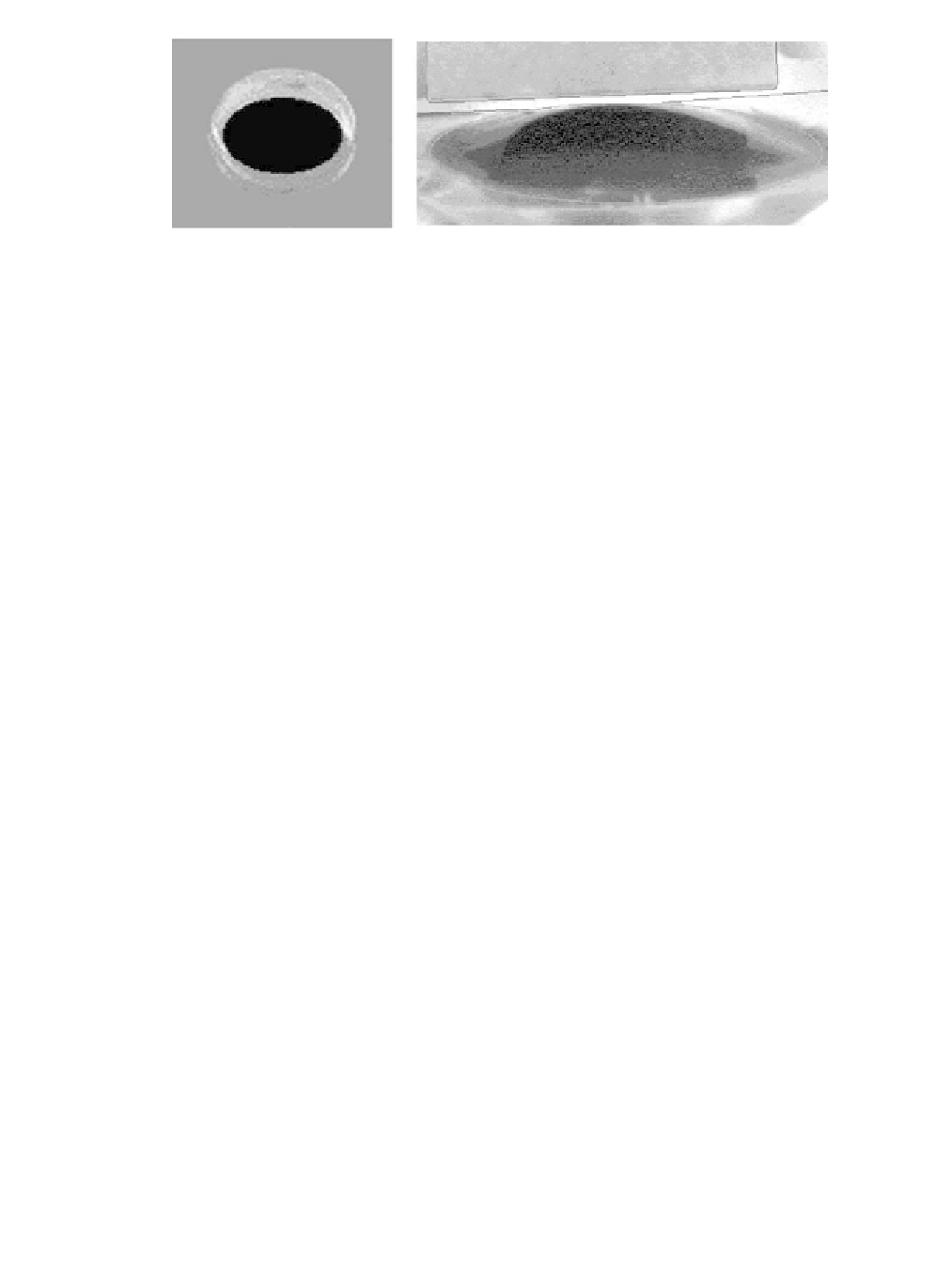Biomedical Engineering Reference
In-Depth Information
Figure 9.39
Magnetic micromembrane clamped in a PDMS matrix.(right) and deformed under
the action of a magnet.
then the maximum deflection is given by the relation
4
Pa
(9.53)
w
=
max
64
D
where
3
.
12(1
E h
D
=
(9.54)
2
-
ν
)
a
is the membrane radius and
P
is the uniform applied pressure on the membrane.
Using
E
= 9.10
5
Pa and
n
= 0.5,
D
is obtained through (9.54):
D
=1/8 10
-7
and we
ind
w
max
=10
μ
m for an applied magnetic pressure of 128 Pa. This deflection is just
at the upper limit of the linear regime given by (9.52). It is immediately seen that
the limit of the linear regime is given by
13
Dh
P
£
(9.55)
4
a
To this stage, the remaining question is how to calculate the applied magnetic
pressure. An approximate solution is to use the formula previously derived for a
magnetic microparticle alone (9.8) and to make the summation over all magnetic
particles located inside the membrane. By doing this, we neglect the field interac-
tion between the magnetic particles. However, this approximation is expected to be
reasonably good because first, the particles are very small—the interaction forces
are weak and very local—and second, the applied external field is perpendicular to
the membrane whereas the interaction forces between the particles are contained
in the plane of the membrane. Because the size of the membrane is generally small
compared to the scale of the applied external magnetic field, we can assume a uni-
form magnetic gradient and we obtain
�
� �
� �
å
F
»
µ
v M H
(
. )
Ñ
=
µ
Nv M H
(
. )
Ñ
(9.56)
mag
0
p
0
p
grains
where
v
p
is the volume of each magnetic microparticle and
N
is the number of
particles embedded in the membrane. Let
f
be the ratio between the volume of the



